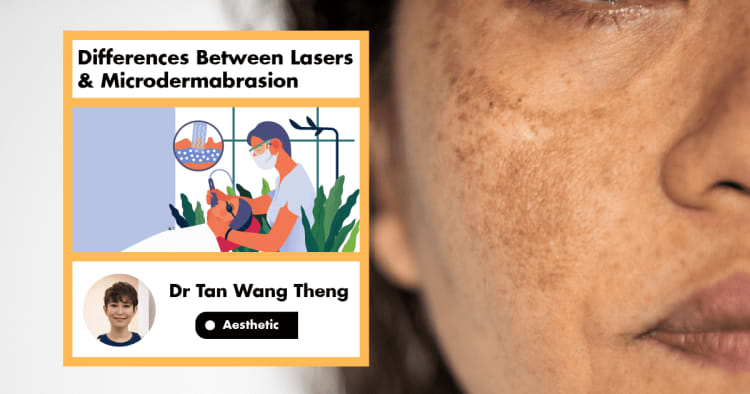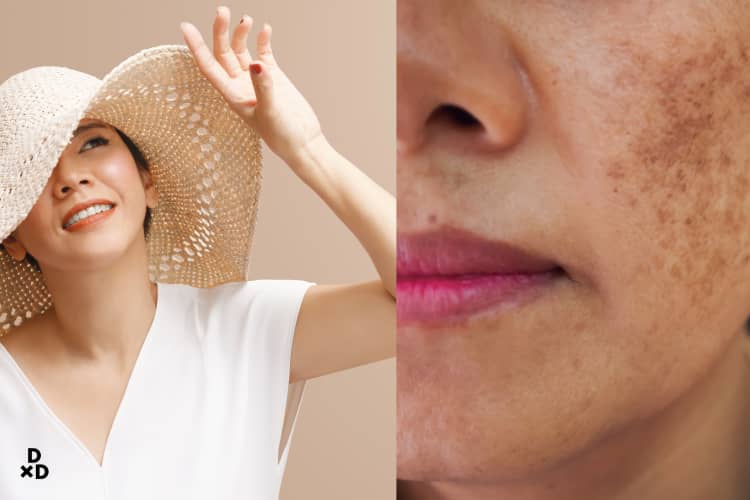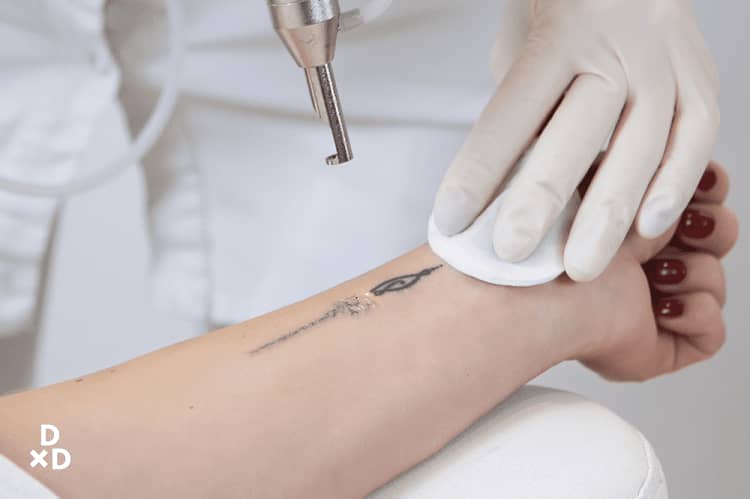Lasers and microdermabrasion can be used to treat hyperpigmentation. They can also be used to treat other skin conditions, although their approaches are different.
While microdermabrasion is straightforward, many types of lasers help to fix uneven skin tones and textures. Two of the more popular and common types are the Q-switched and Picosecond lasers.
With my main interest in facial aesthetics, I have run into many cases of skin problems such as hyperpigmentation. I have written this article to point out the differences between lasers and microdermabrasion so you can better choose which is more suitable for you.
What is hyperpigmentation?

It is the result of increased production of melanin, causing spots or patches of darker skin [1]. The spots are common and affect all skin colours. It can occur on any part of your body [2]. These dark spots are due to a lot of causes such as:
- Sun damage [3]
- Post-inflammation
- Hormonal imbalance
Q-switched & Pico lasers
Of the many lasers used to treat pigmentation, Pico and Q-switched are the most widely used group of non-ablative lasers. Hence, it is used to treat many types of hyperpigmentation.
Q-switched and Pico are considered as non-invasive “lunchtime” lasers since sessions are often short with minimal downtime, if any.
Melanin specifically absorbs the laser light within the dark spots under your skin. Thus, converting it into photoacoustic waves that break the pigment down into smaller pieces. Eventually, your body’s immune system will remove the "pulverised" melanin.
Many of these lasers can also be tuned for “laser toning”, where the layers under the skin are heated lightly. It promotes collagen production, gentle skin tightening, smoother texture as well as brighter tones.
Q-switched Lasers

Q-switched nanosecond lasers emit a high-intensity light pulse in a billionth of a second. The pigment-targeting light pulse breaks down the dark spots into small pieces and aid collagen production. Tuned to reach both deeper and more superficial layers, the pulse will not break your top skin or damaging nearby tissues.
Pico Lasers
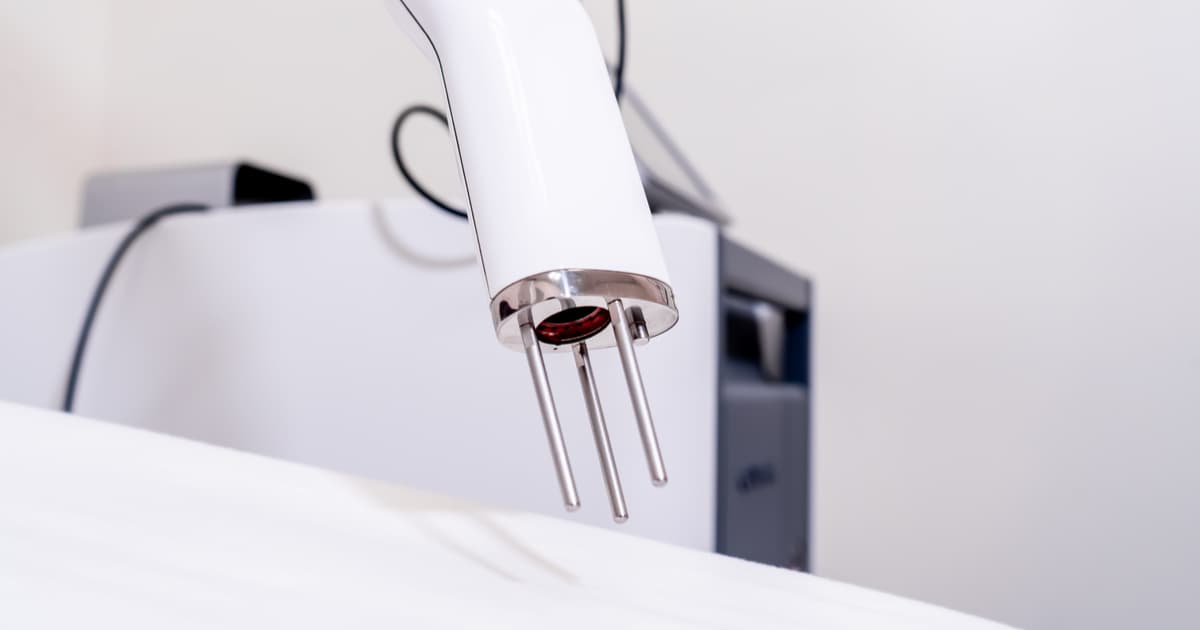
“Picosecond” means one trillionth of a second. That is how short the pico-laser pulses are. First designed as an improved version of Q-switched lasers for tattoo removal. It aims to break the small pieces down into even finer fragments without breaking the skin. Think of it like this:
While Q-switched laser is used to break rocks into pebbles, Pico lasers are able to break pebbles into sand [4][5].
You should always get a consultation with the doctor to determine which type is most suitable for your condition.
Also read: Complete Guide To Pico Laser in Singapore
What is Microdermabrasion?
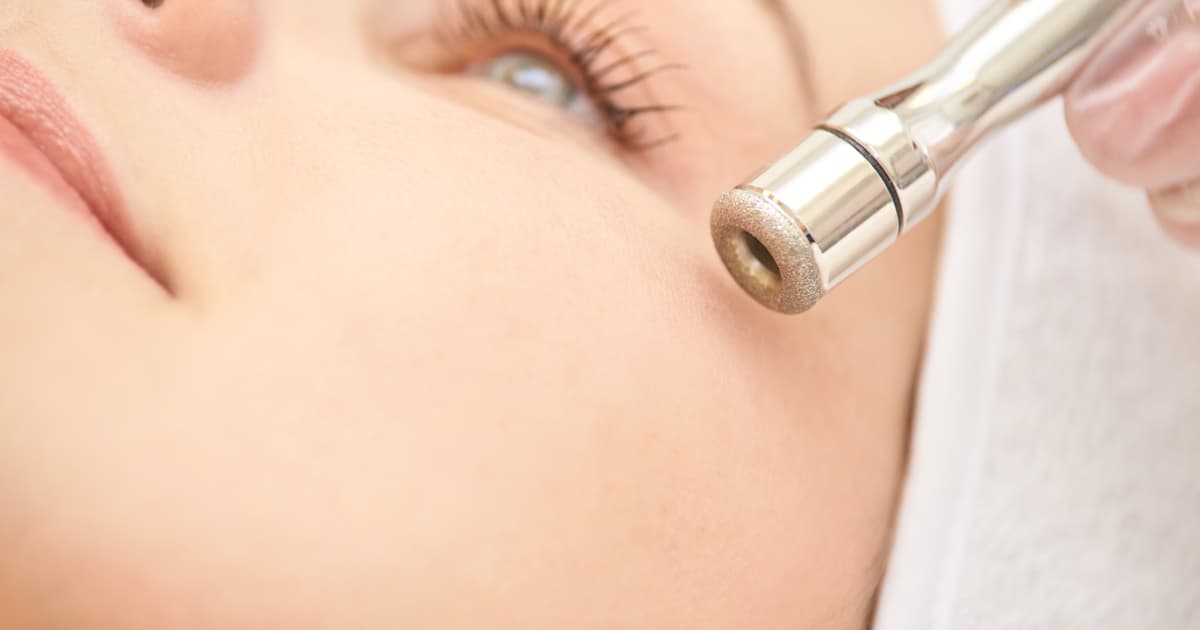
It physically exfoliates the outer layer of your dead skin cells and aids skin renewal. The procedure is simple yet safe. It helps to smoothen skin texture and lighten tones caused by acne marks and sunspots. As a result, it causes superficial skin to resurface and keeps acne in check.
What are the differences?
Lasers
Microdermabrasion
Type:
Non-invasive Light Pulse
Superficial Resurfacing
Mostly Used For:
Pigmentation
Tattoo Removal
Acne Marks
Pore and Skin Toning
Acne Marks and Maintenance
Improve Skincare and Laser Absorption
Duration (Minutes):
15 to 60
20 to 40
Cost Per Session:
$250 and up to $1,200
$70 and up to $1,000
Recommended No. Of Session:
2 to 6
5 to 12
Possible Side Effects:
Mild redness
Swelling
Dyschromia
Redness
Dry and Flaky Skin
Sun Sensitivity
Is laser or microdermabrasion better?
There are different types of hyperpigmentation. On top of that, the same type can also appear differently in different people. Therefore, doctors may suggest a combination of non-ablative lasers with microdermabrasion. This helps to clear and treat your hyperpigmentation issue faster and more effectively.
All in all, it is crucial to note that these treatments only help to remove your existing uneven tones. It is always best to consult an aesthetic doctor to take a look at your lifestyle, skin type and condition. Thus, properly spotting and dealing with the possible roots of your skin problems.
Dr Tan Wang Theng is an Aesthetic Doctor with Moyem Medical Aesthetics. Dr Tan has a special interest in Facial Aesthetics relating to pigmentation, laser treatments and acne.
Read more from Dr Tan Wang Theng in her Q&A here.
Would you like to ask any related health questions?
You can Ask A Doctor right away, or view the complete list of Human Sessions.
Read more: 8 Dermatologist Clinics in Singapore for Your Skin Concerns (2020)
